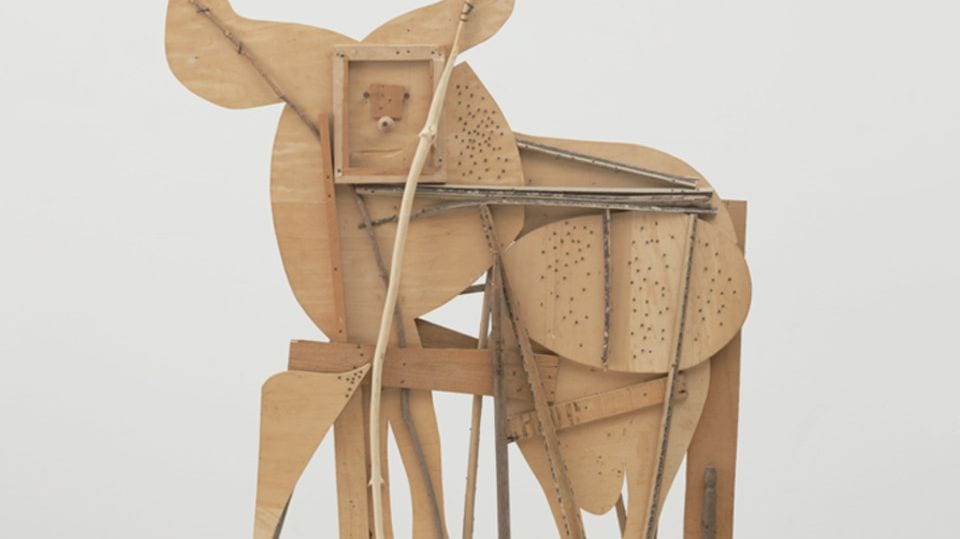Pablo Picasso’s work in three dimensions may be less familiar to the public than his innovations in painting, but it played a very personal role in the artist’s life – he kept most of the pieces he created during his lifetime and lived and worked among them for many years.
Picasso never trained in sculpture, so approached the discipline with a disregard for tradition, finding in it a sheer joy in experimentation. Six decades of sculpture (1902-1964) spanning his entire career are the subject of this ambitious exhibition at MoMA, the largest museum show of his sculptures in half a century. It features 140 works, many of which will be on view in the US for the first time. Occupying all of MoMA’s fourth floor galleries, there will be space to fully experience each sculpture in the round.
The exhibition presents a kind of sculptural biography of the artist. Picasso’s commitment to sculpture was episodic rather than continuous, and every gallery or pair of galleries represents a distinct chapter, the passages from gallery to gallery parallel his moves from one studio to the next. Each new phase brought with it a new set of tools, materials, and processes, and often a new muse or technical collaborator. The initial gallery focuses on Picasso’s earliest work in three dimensions, including his first known sculpture, modelled in clay in Barcelona in 1902 when he was 20, known as Seated Woman. Head of a Woman (Fernande) (1906) and Kneeling Woman Combing Her Hair (1906) are modelled on Picasso’s lover Fernande Olivier.
The exhibition charts the shifting inspirations and circumstances of the artist over the years, from an early and powerful encounter with African and Oceanic sculpture which catalysed a new way of seeing and encouraged his exploration of wood carving (the unfinished standing Figure (1908)) to the monumental and sexual figures in white plaster from his period at the Chateau de Boisgeloup near Paris in the 1930s, and the solemn work from his years in Nazi-occupied Paris such as the harrowing Death’s Head (1941).
One fascinating selection considers Picasso’s return to sculpture at the end of the 1920s when he was commissioned to create a monument for Guillaume Apollinaire, poet and friend and longstanding champion of the artist. None of the ideas that Picasso offered the memorial committee was accepted. His proposals included the almost comically grotesque volumes of Metamorphosis I (1928) and Metamorphosis II (1928); diagrammatic wire constructions and complex works in welded metal. Woman in the Garden (1929– 30) was his final and most ambitious effort, composed from a large number of salvaged metal elements, welded together and unified by an overall coating of white paint.
From ceramics to assemblages of everyday objects, to the sheet metal creations of his later years, whose increasingly monumental scale belies their inspiration as intimate portraits – many are based on the striking profile of his wife Jacqueline – sculpture provided a playground for Picasso’s imagination. It offers visitors a chance to consider one of the most famous of all modern artists from a new biographical perspective.
Picasso Sculpture until 7 February, MoMA, 11 W 53rd St, New York, NY 10019.
More information can be found at www.moma.org.
Follow us on Twitter @AestheticaMag for the latest news in contemporary art and culture.
Credits
1. Pablo Picasso (Spanish, 1881–1973). Bull. Cannes, c. 1958. Plywood, tree branch, nails, and screws. The Museum of Modern Art, New York. Gift of Jacqueline Picasso in honor of the Museum’s continuous commitment to Pablo Picasso’s art. © 2015 Estate of Pablo Picasso/Artists Rights Society (ARS), New York.





